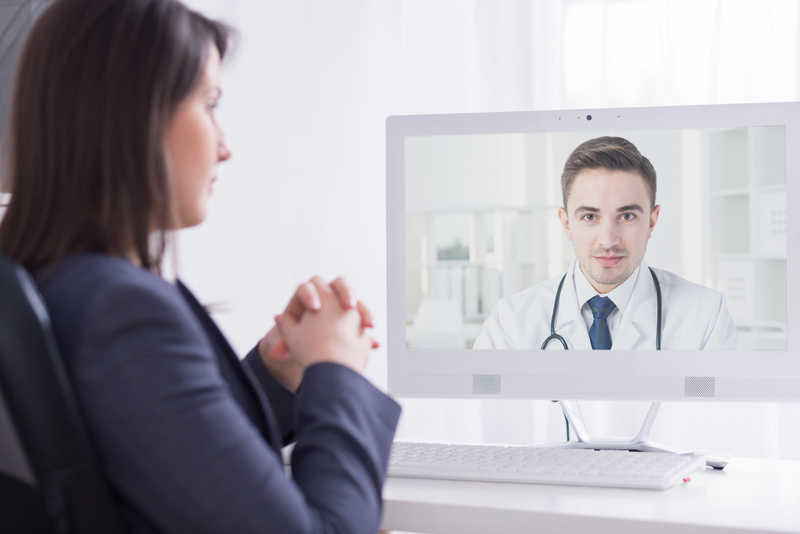Digital E/M services allow US health systems to care for patients remotely. Several factors are fuelling the growth of remote patient monitoring and telemedicine, such as the aging population, patient demand, looming provider shortage, increase in chronic conditions, and policies to promote reimbursement for e-visits. Recognizing the expanding role of telemedicine in the U.S., the American Medical Association introduced six new e-visit CPT codes, which came into effect from Jan. 1, 2020. Providers can use physician billing services to accurately report these new codes for online digital evaluation services and get optimal reimbursement.
Six new CPT Codes for e-Visits
The 2020 Medicare Physician Fee Schedule (MPFS) describes e-Visits as non-face-to-face “patient-initiated digital communications that require a clinical decision that otherwise typically would have been provided in the office.” The six new codes for e-Visits are:
- 99421, 99422, and 99423 to report patient-initiated digital communication provided by a physician or other qualified healthcare professional
- 98970, 98971, and 98972 for digital communications with a non-physician healthcare professionals
| Code | Description |
| 99421 | Online digital evaluation and management service, for an established patient, for up to 7 days, cumulative time during the 7 days; 5-10 minutes |
| 99422 | ….11-20 minutes |
| 99423 | ….21 or more minutes |
| 98970 | Qualified nonphysician health care professional online digital evaluation and management service, for an established patient, for up to 7 days, cumulative time during the 7 days; 5-10 minutes |
| 98971 | ….11-20 minutes |
| 98972 | ….21 minutes or more |
“The new CPT codes will promote the integration of these home-based services that can be a significant part of a digital solution for expanding access to health care, preventing and managing chronic disease, and overcoming geographic and socioeconomic barriers to care,” said AMA President Patrice A. Harris, MD, MA.
Two New Codes for Self-measured Blood Pressure Monitoring (SMBP)
In addition to the above six codes, there are two new codes for SMBP in 2020.
High blood pressure or hypertension is a common problem that increases risk of heart attack and stroke risk. The goal of treatment is to bring the blood pressure level down to a healthy range (130/80 millimeters of mercury [mm Hg] or lower). SMBP can support this goal.
SMBP involves a patient’s regular use of personal blood pressure monitoring devices to assess and record blood pressure across different points in time outside of a clinical, community, or public setting, typically at home (www.cdc.gov). Monitoring blood pressure at home can help people newly diagnosed with high blood pressure or those struggling to reach their target. Harvard Health reported on research which showed that a period of home blood pressure monitoring – one week per month – was sufficient to guide people to better blood pressure control.
According to AMA Vice President of Health Outcomes Michael Rakotz, MD, SMBP provides clinically useful information to help physicians:
- more accurately diagnose and determine the need for treatment in people suspected of having uncontrolled high blood pressure based on routine office BP measurements
- compared to BPs obtained during a single office visit, SMBP provides more BPs over a longer period of time, which represents a more accurate picture of a patient’s BP
- Out-of-office measurements can better predict future cardiovascular risk than measurements taken in the office
In 2020, physician practices that educate patients to perform home blood-pressure monitoring can submit claims using two CPT codes associated with clinical services:
- 99473 Self-measured blood pressure using a device validated for clinical accuracy; patient education/training and device calibration
- 99474 Separate self-measurements of two readings one minute apart, twice daily over a 30-day period (minimum of 12 readings), collection of data reported by the patient and/or caregiver to the physician or other qualified health care professional, with report of average systolic and diastolic pressures and subsequent communication of a treatment plan to the patient
These codes will enable physicians to better diagnose and manage hypertension as well as help patients to play an active role in their care while at home.
Reporting 99421, 99422 and 99423 – Points to Note
- Codes 99421-99423 are for physicians and other qualified healthcare professionals (QHP)
- These codes can be used to report non-face-to-face patient initiated digital communications that require a clinical decision
- CPT code selection should be based on the time involved
- Communication between the patient and provider should be performed through HIPAA-compliant platforms (electronic health record portal or secure email)
- These codes should not be used for non evaluative electronic communication of test results
There are also guidelines on when not to bill online services when the patient is provided another service around the same time as online communication:
- Digital E/M followed by other E/M: If the patient initiates an online E/M service and then presents for a separately reported E/M within seven days, the online E/M work should be included in the separately reported E/M.
- E/M followed by online service: If the patient presents for an E/M and then initiates an online inquiry for the same problem or a related one within seven days, the online service should not be reported.
- Online E/M during post-op period: During the postoperative period, online inquiries related to a surgery should not be reported separately.
Hospitals and health systems are looking to expand care to the home or other non-traditional settings and work with patients and other care providers to improve outcomes and reduce costs. Providers who implement digital health care services can rely on medical billing outsourcing services to report the new codes correctly and get paid.




